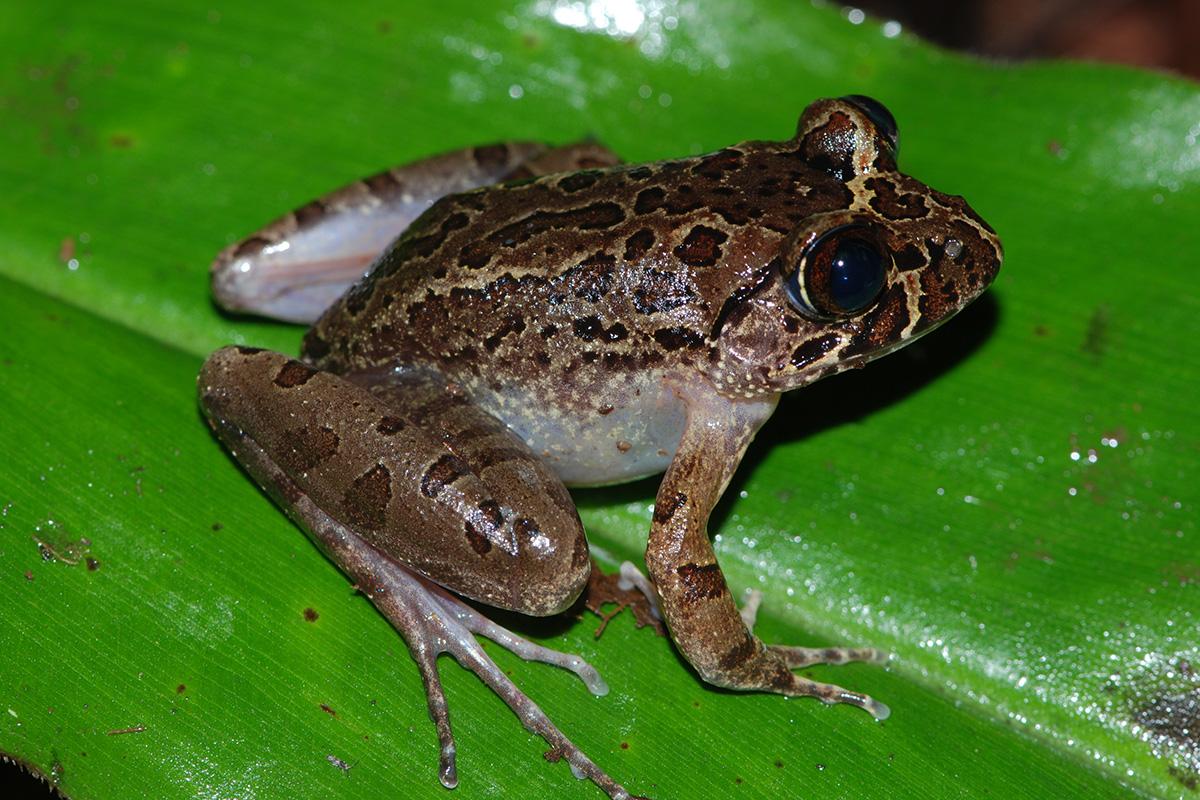Habitat loss, pollution and diseases: amphibians are globally recognized as the most threatened group of organisms. During the last decades particularly dramatic declines, attributed at least partly to the chytrid fungus, have been observed in Central and South America and in northeast Australia. Although some researchers assumed an African origin of this fungus, no larger regional declines of amphibian populations have been observed on that continent. Now for the first time researchers from the „Museums für Naturkunde“ Berlin report a dramatic decline of amphibians from one of the most species rich African regions, the western Cameroonian mountains.
The Cameroon volcanic line are within the most diverse regions of the World. Many species, including amphibians, only occur on a few square kilometers of mountain forest or grasslands on single mountain peaks. With more than a hundred, partly still undescribed frog species, Mount Manengouba is particularly species rich. Since 2004 Mareike Hirschfeld and Mark-Oliver Rödel from the „Museum für Naturkunde“ Berlin investigate the amphibian fauna of that mountain. In the scientific journal PLoS ONE they now report a dramatic decline of the amphibian populations. The Berlin researchers, as well as their colleagues from Cameroon, the United States and England regularly observed the amphibians on this mountain and Mount Oku. They thus could exactly pinpoint the year when the decline started. Mareike Hirschfeld explains: „Since 2011 some frog species on Monangouba suddenly turned extremely rare or disappeared completely.“ Mark-Oliver Rödel, head of the department of Diversity dynamics at the natural history museum, adds „and that concerned even species which in previous years were extremely abundant, even in highly degraded habitats“.
The researchers examined skin smears from frogs encountered in the field and from many Cameroonian frogs deposited in museum collections. Therewith they could show that frog decline in a region co-occurred with the emergence of the chytrid fungus. The decline pattern further underlined the theses of the fungus being the killer. Mostly species of the cooler mountain tops were affected, in contrast to species of the lowlands, although these are living in close proximity to polluted and degraded habitats. The fungus prefers cooler and moist areas. Interestingly not all species were equally affected. Whereas some species turned very rare or disappeared, others kept constant population sizes or even increased. The researchers assume that the survivors profited from species specific skin secretions protecting them from the fungus. This has been observed as well in other species across the World. To ascertain the long-term survival of the victims among the frog species, the researchers call for the strict protection of the few remaining natural habitats. They further encourage captive breeding programs for the most threatened taxa, allowing potential reintroduction of these species in the future.
Link: http://journals.plos.org/plosone/article?id=10.1371/journal.pone.0155129
Pictures for free you can find here:
http://download.naturkundemuseum-berlin.de/presse/Kamerunfrosch
The Manegngouba long-fingered frog (Cardioglossa manengouba) exclusively occurs above 2000 m altitude on Mont Mannegoub. Discovered and described as new to science in 2008 it is now one of the species threatened by extinction (photo: Mark-Oliver Rödel).
The mountain night frog (Astylosternus montanus) is one of the few species which even increased in abundance during the last years, despite the presence of the chytrid fungus (photo: Mark-Oliver Rödel).
